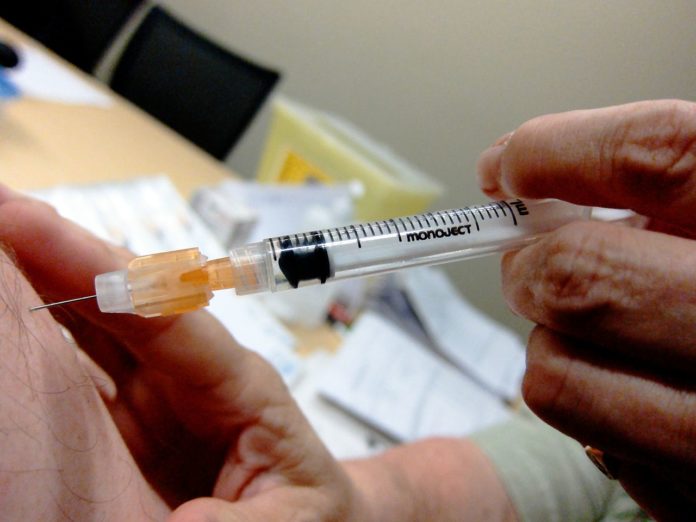Flu vaccines usually change every season depending on the virus on the prowl
The holy grail of flu prevention – a universal flu shot – is one step closer to reality.
A study from the Perelman School of Medicine at the University of Pennsylvania describes the candidate vaccine in Nature Communications. The compound elicited a strong antibody response to a structure on the surface of flu viruses, called the hemagglutinin (HA) stalk. It protected mice from infection by various flu strains.
Despite the widespread use of seasonal vaccines, flu viruses cause millions of infections, hundreds of thousands of hospitalizations, and tens of thousands of deaths. The newly described vaccine has the potential to be developed into a universal flu vaccine, which–unlike the current seasonal flu vaccines–could be given a few times over a lifetime to provide protection potentially similar to a tetanus vaccine.
“This vaccine was able to do something that most other candidate flu vaccines have not been able to do. It was able to elicit protective responses against a conserved region that offers broad protection,” said study co-senior author Drew Weissman, MD, PhD, a professor of Infectious Diseases.
“It was able to elicit protective responses against a conserved region that offers broad protection. If it works in humans even half as well as it does in mice, then the sky’s the limit”
“It was able to elicit protective responses against a conserved region that offers broad protection. If it works in humans even half as well as it does in mice, then the sky’s the limit–it could be something that everyone uses in the future to protect themselves from the flu,” said co-senior author Scott Hensley, PhD, an associate professor of Microbiology.
Modern viral vaccines typically use lab-grown viral proteins to elicit an immune response that protects people against future exposures to a virus. On the whole, this approach hasn’t worked well against influenza viruses. Flu virus particles are studded with mushroom-like HA proteins, which seasonal flu vaccines use to elicit antibody responses. The problem is that these antibody responses are almost entirely directed against the outermost “head” region of the HA protein, which tends to mutate rapidly. In addition, strains of flu that are prevalent in one flu season are often replaced by other strains with different HA head structures in the next flu season. As a result, seasonal flu vaccines provide incomplete and temporary protection against the flu. This is why they need to be updated every year.
The Penn vaccine does not use flu HA proteins–at least, not directly. Instead, it uses mRNA molecules that encode HA proteins to elicit an antibody response. “When we first started testing this vaccine, we were blown away by the magnitude of the antibody response,” said Hensley.


